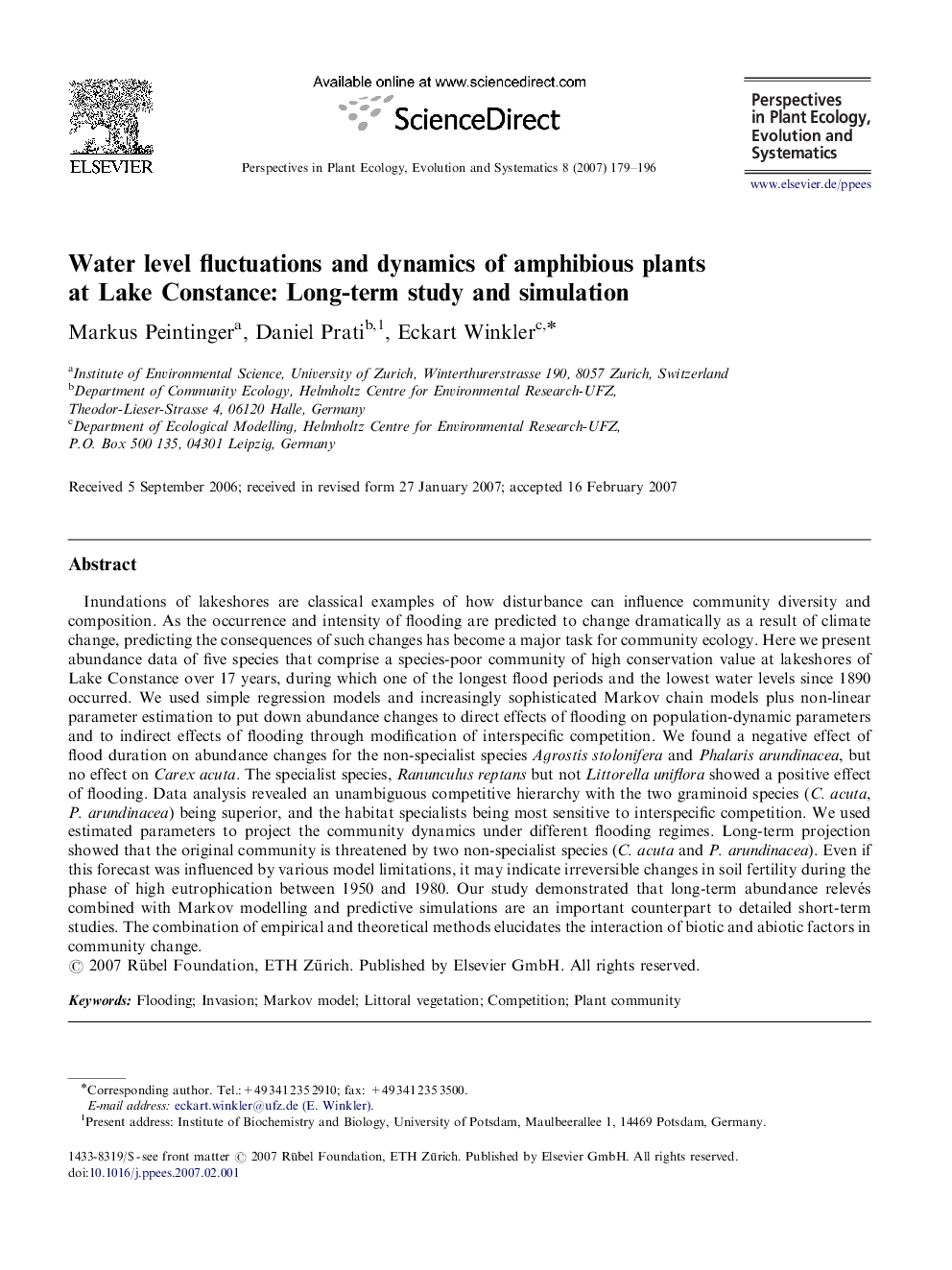| Article ID | Journal | Published Year | Pages | File Type |
|---|---|---|---|---|
| 4401278 | Perspectives in Plant Ecology, Evolution and Systematics | 2007 | 18 Pages |
Inundations of lakeshores are classical examples of how disturbance can influence community diversity and composition. As the occurrence and intensity of flooding are predicted to change dramatically as a result of climate change, predicting the consequences of such changes has become a major task for community ecology. Here we present abundance data of five species that comprise a species-poor community of high conservation value at lakeshores of Lake Constance over 17 years, during which one of the longest flood periods and the lowest water levels since 1890 occurred. We used simple regression models and increasingly sophisticated Markov chain models plus non-linear parameter estimation to put down abundance changes to direct effects of flooding on population-dynamic parameters and to indirect effects of flooding through modification of interspecific competition. We found a negative effect of flood duration on abundance changes for the non-specialist species Agrostis stolonifera and Phalaris arundinacea, but no effect on Carex acuta. The specialist species, Ranunculus reptans but not Littorella uniflora showed a positive effect of flooding. Data analysis revealed an unambiguous competitive hierarchy with the two graminoid species (C. acuta, P. arundinacea) being superior, and the habitat specialists being most sensitive to interspecific competition. We used estimated parameters to project the community dynamics under different flooding regimes. Long-term projection showed that the original community is threatened by two non-specialist species (C. acuta and P. arundinacea). Even if this forecast was influenced by various model limitations, it may indicate irreversible changes in soil fertility during the phase of high eutrophication between 1950 and 1980. Our study demonstrated that long-term abundance relevés combined with Markov modelling and predictive simulations are an important counterpart to detailed short-term studies. The combination of empirical and theoretical methods elucidates the interaction of biotic and abiotic factors in community change.
